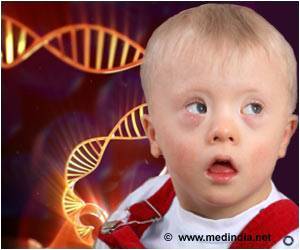A sophisticated computational algorithm has achieved greater accuracy than conventional methods in assessing individual risk for type 1 diabetes.
A sophisticated computational algorithm has achieved greater accuracy than conventional methods in assessing individual risk for type 1 diabetes. This algorithm was applied to a large set of gene markers.
A research team led by Hakon Hakonarson, M.D., Ph.D., director of the Center for Applied Genomics at The Children''s Hospital of Philadelphia, suggests that their technique, applied to appropriate complex multigenic diseases, improves the prospects for personalizing medicine to an individual''s genetic profile. The study appears in the October 9 issue of the online journal PLoS Genetics.Genome-wide association studies (GWAS), in which automated genotyping tools scan the entire human genome seeking gene variants that contribute to disease risk, have yet to fulfill their potential in allowing physicians to accurately predict a person''s individual risk for a disease, and thus guide prevention and treatment strategies.
The authors say that for many diseases, the majority of contributory genes remain undiscovered, and studies that make selective use of a limited number of selected, validated gene variants yield very limited results. For many of the recent studies, the area under the curve (AUC), a method of measuring the accuracy of risk assessment, amounts to 0.55 to 0.60, little better than chance (0.50), and thus falling short of clinical usefulness.
Hakonarson''s team broadened their net, going beyond cherry-picked susceptibility genes to searching a broader collection of markers, including many that have not yet been confirmed, but which reach a statistical threshold for gene interactions or association with a disease. Although this approach embraces some false positives, its overall statistical power produces robust predictive results.
By applying a "machine-learning" algorithm that finds interactions among data points, say the authors, they were able to identify a large ensemble of genes that interact together. After applying their algorithm to a GWAS dataset for type 1 diabetes, they generated a model and then validated that model in two independent datasets. The model was highly accurate in separating type 1 diabetes cases from control subjects, achieving AUC scores in the mid-80s.
The authors say it is crucial to choose a target disease carefully. Type 1 diabetes is known to be highly heritable, with many risk-conferring genes concentrated in one region-the major histocompatibility complex. For other complex diseases, such as psychiatric disorders, which do not have major-effect genes in concentrated locations, this approach might not be as effective.
The researchers used data provided by the Wellcome Trust Case Control Consortium and the Genetics of Kidneys in Diabetes study. Hakonarson''s co-authors from The Children''s Hospital of Philadelphia were Kai Wang, Ph.D., Struan Grant, Ph.D., Haitao Zhang, Jonathan Bradfield, Cecilia Kim, Edward Frackleton, Cuiping Hou, Joseph T. Glessner, and Rosetta Chiavacci, all of the Center for Applied Genomics; Charles Stanley, M.D., of the Division of Endocrinology; and Dimitri Monos, Ph.D., of the Department of Pathology and Laboratory Medicine. Other co-authors were Constantin Polychronakos, M.D., and Hui Qi Qu, of McGill University, Montreal; and Zhi Wei, of the New Jersey Institute of Technology.
Source-Newswise
RAS
 MEDINDIA
MEDINDIA




 Email
Email







